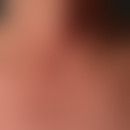DefinitionThis section has been translated automatically.
In electric baths, the use of large-surface anodes/cathodes allows constant, unidirectional currents to be used, which are favoured by the conductivity of the water. Hydroelectric baths are used, for example, for flaccid paralysis, functional circulatory disorders and for pain treatment.
In addition to the rectified, constant currents, polar bath substances are transported percutaneously (iontophoresis).
A distinction is made between separate cellular baths for the extremities and Stanger baths.
Whereas in cell baths the current must flow through the whole body (from one extremity to the other), in a Stanger bath (from electrode to electrode) a larger part of the current (70 to 90%) flows past the body lying in the tub and therefore cannot be precisely dosed. The current is individually adjusted and is limited above all by the sensation on the particularly permeable skin areas.
EffectsThis section has been translated automatically.
Hydroelectric baths have a hyperemic and analgesic effect. Experience has shown that the different polarity from top to bottom or side-to-side and vice versa should have a differentiated relaxing effect.
You might also be interested in
IndicationThis section has been translated automatically.
For extensive pain treatment of generalised forms of rheumatic and soft-tissue rheumatic diseases. For flaccid paralysis and functional circulatory disorders
ImplementationThis section has been translated automatically.
- In the case of neuralgic and myalgic complaints, the diseased part of the body is connected to the anode, whereas in flaccid paralysis it is connected to the cathode.
- In the case of central motor and polyneuritic disorders, the anode is connected in a descending head position; in the case of circulatory disorders, the polarity is arbitrary and can be alternated.
- The currents should be carefully regulated and, especially after treatment, reduced slowly. In areas of the skin that are not intact, it is recommended to cover them with a fatty ointment.
ContraindicationThis section has been translated automatically.
Psychoses, inflammatory skin diseases (painful on skin wounds)
LiteratureThis section has been translated automatically.
- Uehleke B et al (2012) In: André-Michael Beer, Martin Adler [Ed.] Leitfaden Naturheilverfahren für die ärztliche Praxis, Urban und Fischer Verlag p. 57.




